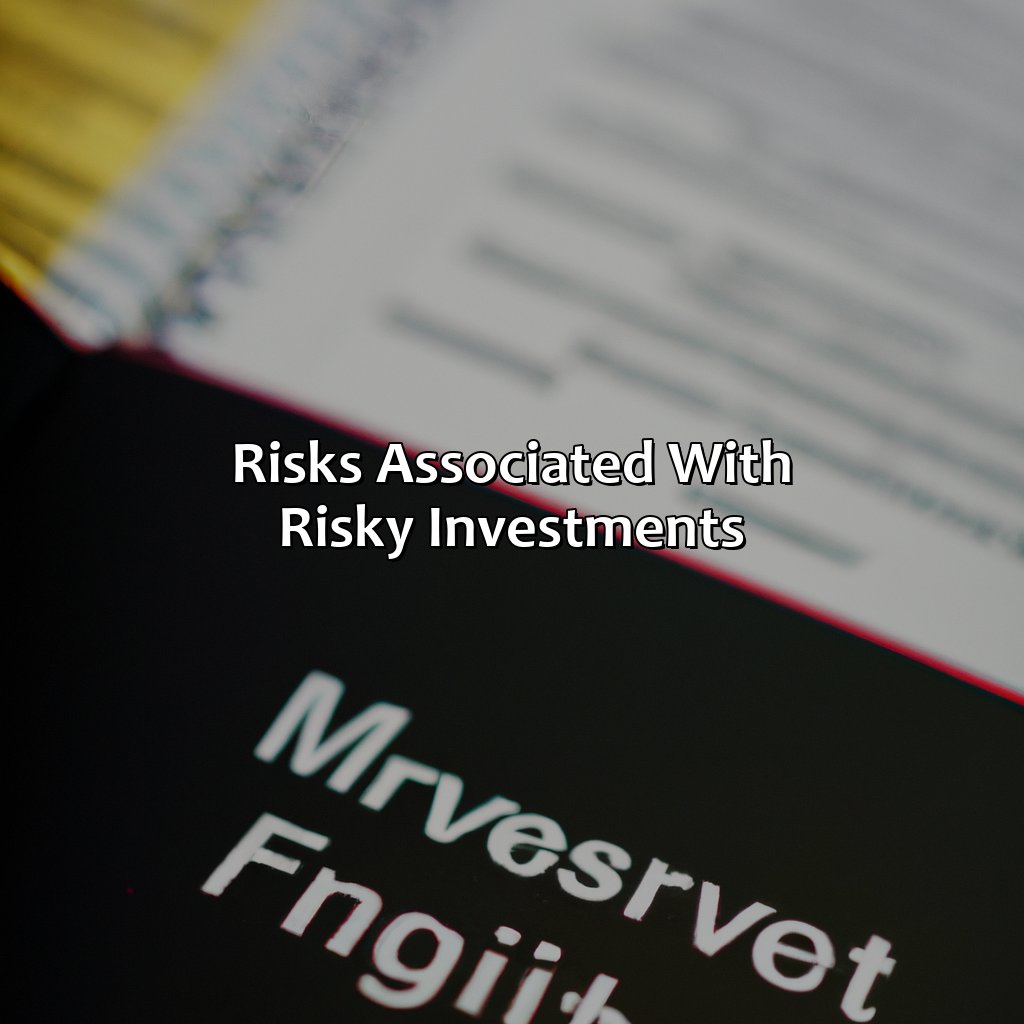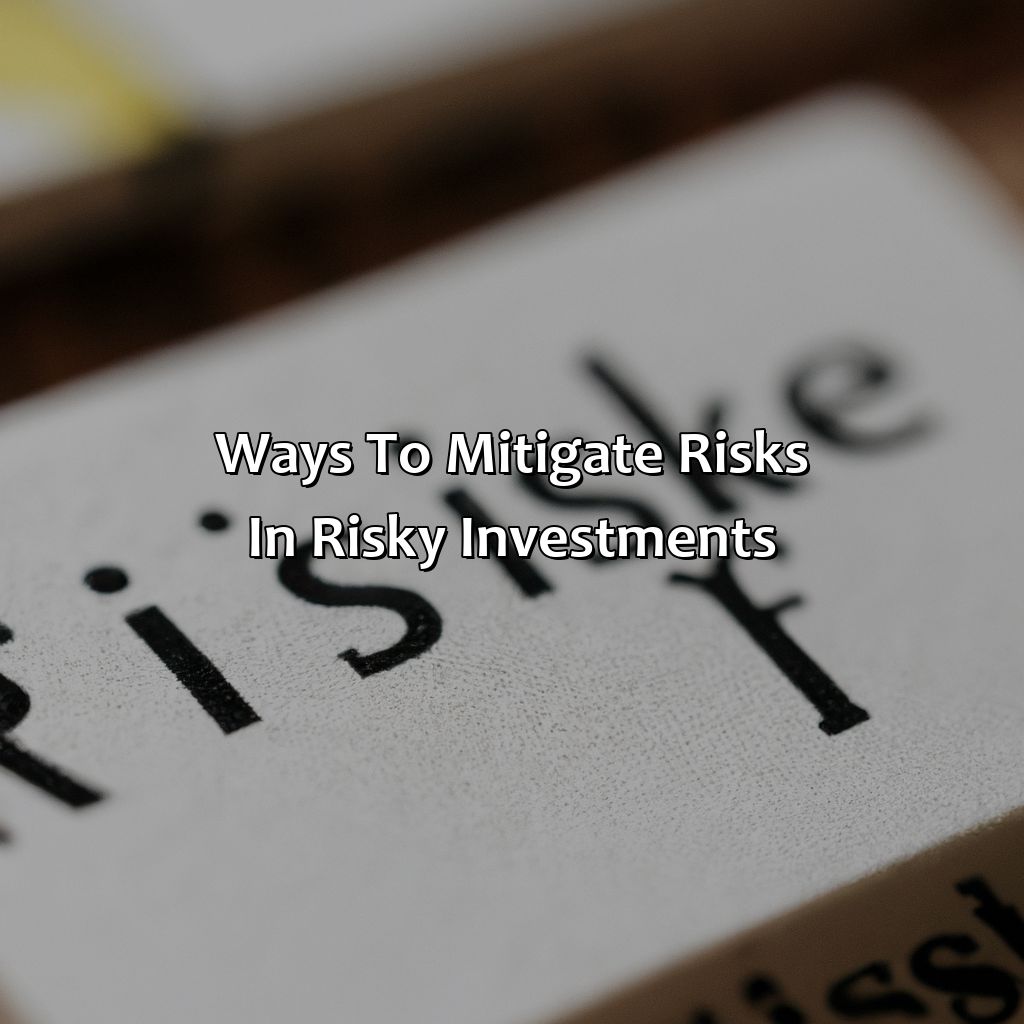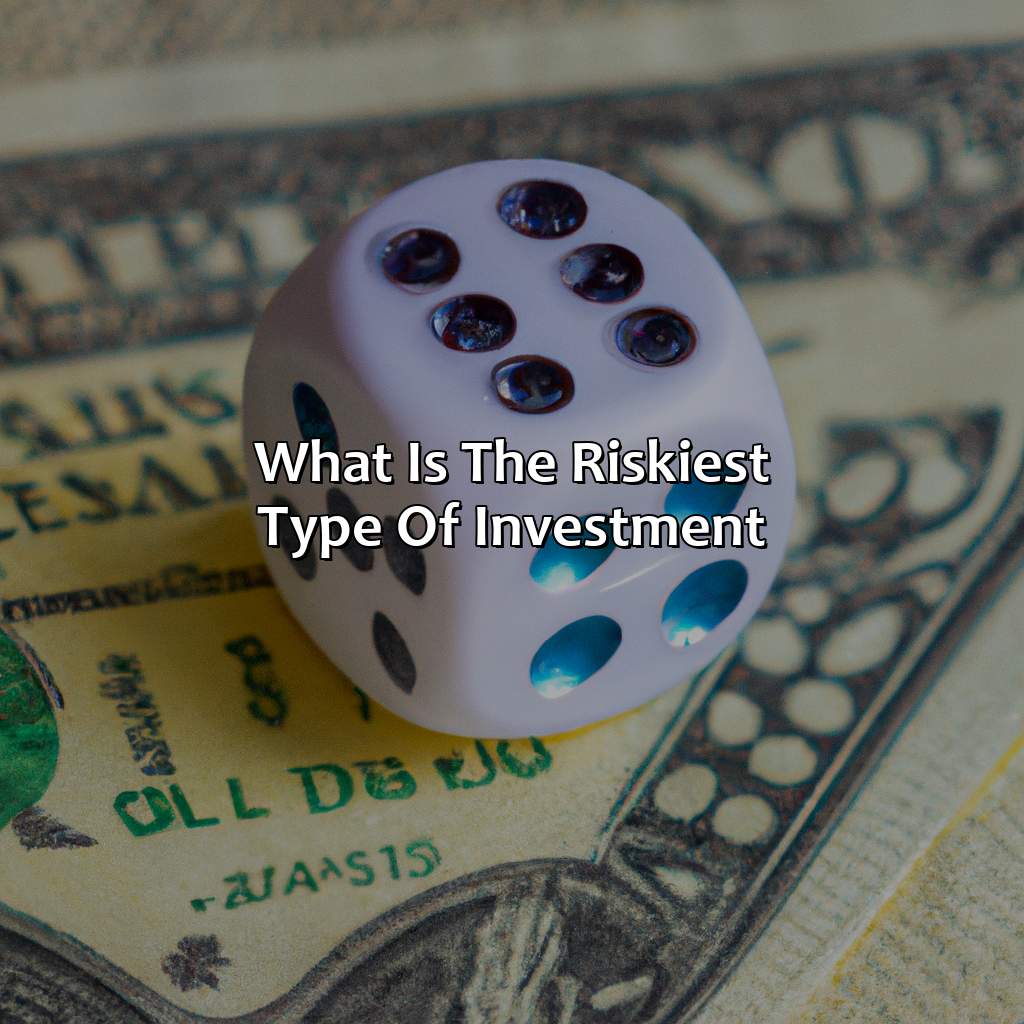What Is The Riskiest Type Of Investment?
Key Takeaway:
- Cryptocurrencies are the riskiest type of investment due to high volatility, lack of regulation, and fraudulent schemes. Investors should exercise caution and thoroughly research before investing in cryptocurrencies.
- Penny stocks also pose a high risk due to their low liquidity and susceptibility to manipulation. Investors should be wary of penny stock scams and thoroughly research any penny stock before investing.
- Risky investments in general are associated with high volatility, lack of regulation, fraudulent schemes, and liquidity risks. Investors can mitigate these risks through diversification, risk management strategies, and thorough research and due diligence.
Are you considering investing your hard-earned money, but unsure of what type of investment is the riskiest? Fear not, as this article will explain the riskiest investment and provide advice on how to make the most of your money. You can make smart investments by arming yourself with the right knowledge.
Types of Risky Investments
Investments are made to generate income and create wealth. However, some investments come with higher risks than others. It is crucial to understand the Types of High-Risk Investments and their potential to lose money.
- Stocks: Buying shares of a company involves high-risk as their value can fluctuate rapidly with the markets.
- Cryptocurrency: This digital currency can be volatile and depends on factors like market sentiment and government regulations.
- Derivatives: These contracts rely on the underlying assets’ performance and come with high leverage, which can increase the risk factor.
Investing in high-risk assets may have potential rewards but requires astute analysis and careful risk management. It is essential to consult a financial advisor before investing.
Pro Tip: Before making any investment decision, assess the risk tolerance by understanding the potential losses and gains.
Investing in high-risk assets can offer excellent returns, but it requires proper research and analysis to make an informed decision. Be sure to balance high-risk assets with low-risk investments for a well-diversified portfolio.

Image credits: retiregenz.com by Adam Duncun
Risks Associated with Risky Investments
Risky investments can lead to significant losses and monetary setbacks. While these investments can bring substantial gains, there are potential risks to consider. Diversification, research, and accepting the possibility of losses are crucial for investors. It is essential to understand the specific risks associated with the type of investment, such as market volatility, liquidity risk, credit risk, and inflation risk. A thorough analysis of risk management is essential to evaluate the potential success of a risky investment.
Furthermore, investors may overlook other risks related to their investments, such as reputational risk, environmental, social and governance risks, and regulatory risks. These risks can cause severe financial repercussions, such as fines from regulatory bodies, loss of credibility, or reduced consumer confidence, among others.
One true fact that investors should consider is that the riskiest type of investment varies based on an individual’s financial circumstances and investment goals. As per sources, investors should assess their risk tolerance and investment objectives before choosing a risky investment strategy. It is essential to understand both the potential risks and rewards before investing in any market.

Image credits: retiregenz.com by Adam Arnold
Ways to Mitigate Risks in Risky Investments
Investments come with risks that are inherent and unpredictable, leaving investors wary about where to put their money. However, there are ways to reduce the risk associated with risky investments. Here are some tips to follow:
- Diversify your investment portfolio and spread your investment across different industries and asset classes.
- Conduct thorough research and analysis of the investment opportunities to ensure you understand the possible outcomes and risks.
- Invest with a long-term perspective and avoid any emotional decision-making that can lead to impulsive choices.
- Keep a close watch on your investment portfolio and monitor its performance regularly.
When it comes to mitigating risks associated with risky investments, one of the most important aspects is to maintain a disciplined approach towards investing. This means not being swayed by market trends or popular chatter, but instead, rely on data and insights to make informed choices.
To avoid the fear of missing out, investors need to educate themselves and stay updated on the latest market trends. With the help of financial advisors and technology tools, investors can make informed decisions that are best suited for their investment goals and risk appetite. Remember, the more knowledge one has, the better equipped they are to make sound decisions.

Image credits: retiregenz.com by David Jones
Some Facts About the Riskiest Types of Investments:
- ✅ Investing in cryptocurrencies is considered one of the riskiest types of investments due to their volatile nature. (Source: Investopedia)
- ✅ Investing in individual stocks can be risky as they are subject to market fluctuations and company-specific risks. (Source: CNBC)
- ✅ Investing in start-up companies has a high risk of failure, with a significant percentage of start-ups failing within the first few years. (Source: Forbes)
- ✅ Forex trading can be highly risky due to the instability of the global economy and political factors. (Source: The Balance)
- ✅ Options trading can be risky due to the potential loss of the entire investment, and should be approached with caution. (Source: The Motley Fool)
FAQs about What Is The Riskiest Type Of Investment?
What is the riskiest type of investment?
The riskiest type of investment is one that has the potential to offer high returns, but also comes with a high level of volatility and uncertainty. Such investments have very high risks of losing all your invested capital. Examples include investing in untested startups, speculative commodities, gambling, and penny stocks.
Why is investing in startups risky?
Investing in startups is considered risky because they have a high probability of failure, and it’s challenging to predict the future success of the company. Additionally, most startups do not generate revenue initially, which means that investors could lose their invested capital if the startup fails to secure additional funding or reach profitability.
What makes speculative commodities risky investments?
Speculative commodities have a relatively high level of uncertainty, and their prices can fluctuate significantly, depending on various factors. Examples of speculative commodities include gold, silver, and oil. Additionally, investors in these commodities typically don’t own the underlying physical asset and instead trade futures contracts, increasing investment risks.
Why is gambling a high-risk investment?
While gambling may offer potentially high returns, it is not a reliable or sustainable form of investment. Gambling relies solely on luck, and the odds are typically stacked against the player. As a result, the majority of players will not earn sufficient returns to justify the risks.
What are penny stocks, and why are they considered risky?
Penny stocks are a type of investment that trades for very low prices, typically under $5 per share. While they may seem attractive due to the low price, they are considerably riskier than mainstream stocks. Penny stocks generally lack liquidity, have less regulation, and have a higher probability of scams, fraud, and price manipulation by insiders.
What is the best way to manage risk in investments?
The best way to manage risks is to follow a diverse investment strategy that involves investing in a range of low-risk and high-risk investments. Additionally, consider investing only what you can afford to lose, researching investment options thoroughly, and avoiding impulsive decisions based on emotions or peer pressure. Consult with a licensed financial advisor to help you understand how to manage risk in investment.


